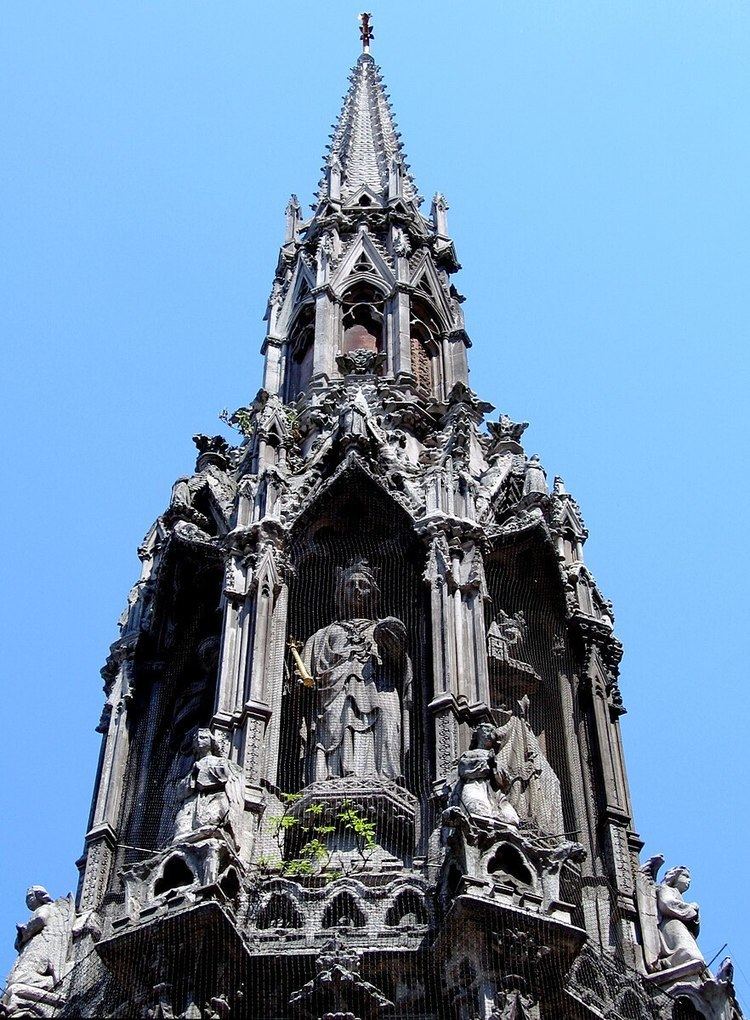Nationality British Name Thomas Earp | Role Sculptor Died 1893 | |
 | ||
Known for sculpture, stone carving | ||
Thomas Earp (1828–1893) was a British sculptor and architectural carver who was active in the late 19th century. His best known work is his 1863 reproduction of the Eleanor Cross which stands at Charing Cross in London. He specialised in sculpture for Gothic Revival churches and worked closely with the architect George Edmund Street in the 1860s and 1870s.
Contents
Early life and career
Earp was born in Nottingham, England. He studied at the Nottingham School of Art and Design and after completing his studies in the early 1850s went to work for the building contractor George Myers (who himself worked extensively for Pugin) in London.
Around 1851 Earp founded his own architectural sculpture practice. By 1864 he was established at 1 Kennington Road, Lambeth, and employed 24 people. One of his projects, a marble and alabaster reredos, pulpit and baptismal font for the Church of St John the Baptist, Huntley, was particularly acclaimed and was exhibited at the Great Exhibition of 1862.
Earp and Hobbs Ltd
Earp's practice expanded in 1864 when he went into partnership with another sculptor, Edwin Hobbs Senior (c.1841-1904). Together they opened premises in Chorlton-upon-Medlock, Manchester on Lower Mosley Street, later moving to premises in Moss Side. While Hobbs was based in Manchester, Earp worked from the London office at 32 Canterbury Place, Lambeth Walk. In the late 1880s the business was renamed Earp, Son and Hobbs, and by 1900 it was trading as Earp and Hobbs Ltd. Thomas Earp's son, Edgar Earp worked in the practice along with Edwin Hobbs Junior.
Works
Works include:
